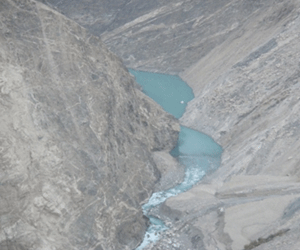Rivers as natural watercourses have remained the most efficient systems to sustain lives and livelihoods of millions of people irrespective of whom they are serving but the scenario has been transforming as the pressures on these water systems and attached ecology has seen changes leaving the Rivers to be managed in a way that suits development of varied nature and interests. Rivers are polluted, rivers are being mined, rivers are being trained to respond to changes, rivers are dammed for energy but there is no effective mechanism to increase the knowledge about river and its morphological behaviour in order to best address the user & socio-cultural interrelationships. Himalayan Rivers have drawn their path while going through immense geological processes and the writing is clear on the wall that Himalayan systems are evolving natural systems and are required to be dealt with careful development planning. While Himalayas have been credited as ‘Water Tower of Asia’ for their immense potential of serving the humanity, increasing challenges of climate change and intensification of hydro potential with micro to macro impacts on forests, land, livelihood, modulating hydrological flow regime suggests rethinking about rationalization of development schemes or planning where changes are irreversible and one approach fits all is not at all a welcome method. Download Report


Recent Comments